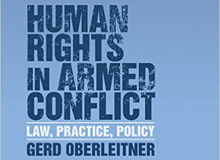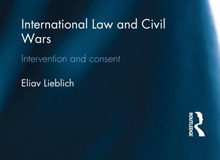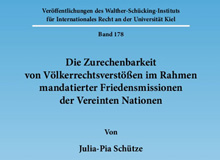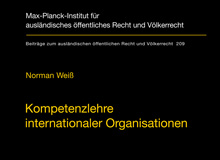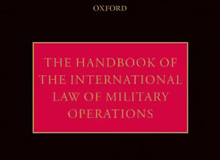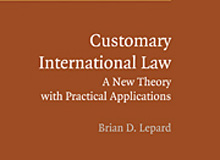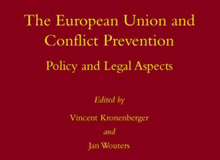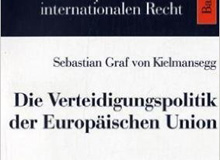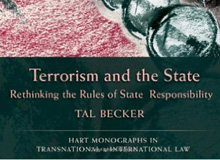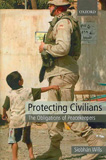
Protecting Civilians: The Obligations of Peacekeepers. By SIOBHÁN WILLS. Oxford: Oxford University Press, 2009. ISBN-13: 978-0-19-953387-9 (hb.) £60.00.
Peacekeeping as an instrument of international peace and security has been around for a considerable period of time. Leaving aside its early manifestations before the Second World War, peacekeeping under the collective security system of the United Nations has now entered into the seventh decade of its existence. Given the maturity of the concept and the large number of operations launched during this period, one may be forgiven for thinking that the normative framework of peacekeeping does not quite reflect its venerable age. In the early days, attention focused mainly on the legal basis of peacekeeping within the UN Charter system. While this question has still not been settled conclusively and remains relevant to this day, in practice it has receded into the background. Currently, the most pressing legal questions raised by peacekeeping concern the status of peace support operations and that of their members, their duty to apply and observe human rights and international humanitarian law as well as the accountability of such operations and their different stakeholders, in particular the relevant international organisations and troop-contributing States.
The fact that these and other issues are the subject of continuing debate is a sign of the unsettled and relatively underdeveloped nature of the legal framework of peacekeeping. This lack of refinement may be explained with reference to a number of factors. The nature of peacekeeping has changed significantly over time. The complex peace support operations we see today raise problems which did not arise in classic peacekeeping missions, or at least not on this scale or with this regularity. The legal and political environment in which peacekeeping operations take place has also changed dramatically. For instance, the principle of accountability is of far greater concern today than it was during the Cold War or even just a decade ago. Finally, the ad hoc and pragmatic manner in which peacekeeping has developed means that international practice in this area has been codified in a piecemeal manner. The regulatory framework of peacekeeping is therefore fragmented, incomplete and generally speaking lags behind developments on the ground. The duty of peacekeepers to protect civilians from severe human rights violations provides a case in point.
As Siobhán Wills explains in her timely study of this subject, peacekeeping operations face a serious dilemma whenever they witness severe human rights abuses in their area of deployment. To stand by idly without attempting to put an end to those abuses runs counter to some of the basic principles on which the UN is founded. However, given that protecting local civilians from one side of the conflict may be regarded as assisting another side, a peacekeeping force may quickly loose its reputation for impartiality should it intervene to stop human rights violations in such circumstances. Moreover, by promising protection without possessing the resources and the resolve necessary to deliver that promise, a peacekeeping force may in fact play into the hands of the parties responsible for human rights violations. One of the key points that emerges from Wills’ work is that clarifying the legal obligations that international law imposes on peacekeepers to protect the civilian population from serious human rights violations can go a long way towards addressing this dilemma, even if it cannot fully resolve it. Legal obligations provide peacekeeping forces with clear standards of conduct and compel them to act in situations where otherwise they may dither.
In her book, Wills sets out to examine the extent to which international humanitarian law and human rights law impose a general duty on peacekeeping operations to protect civilian populations from serious abuses of their human rights. The first chapter traces the evolution of peacekeeping and focuses in particular on how past peacekeeping operations have dealt with the question of civilian protection. From the Congo through Yugoslavia to Darfur, the record is not a particularly happy one. The second chapter discusses the applicability of international humanitarian law to peacekeeping forces and the effect of Common Article 1 of the Geneva Conventions. While it is now generally accepted that Common Article 1 compels every State party to ensure respect for the Geneva Conventions even in armed conflicts to which they are not parties, Wills suggests that few concrete civilian protection obligations may be derived for peacekeepers from this general duty.
In the third chapter, the author considers what civilian protection obligations result from human rights law. The extra-territorial application of different human rights regimes is now well-established. However, as this chapter shows, the extent to which these regimes impose positive obligations on peacekeepers depends on the precise conditions that trigger extra-territoriality, whether the law of armed conflict qualifies or displaces applicable human rights norms and the jurisprudence developed by the different human rights courts. In this latter respect, Wills rightly draws attention to the accountability gap left by the decision of the European Court of Human Rights in the Behrami and Saramati cases. However, it is equally important to recall that those cases merely establish the immunity of UN-mandated peace support operations from the supervisory jurisdiction of the European Court of Human Rights, not the inapplicability of the European Convention of Human Rights to peace support operations as such. The purpose of the fourth chapter is to explore the applicability of the law of occupation to peacekeeping forces. Based on a detailed analysis of the normative background and key operations, Wills suggests that the UN should accept to be bound by the law of occupation when UN forces find themselves in de facto occupation of foreign territory as a first step towards developing a set of rules specifically tailored for international administrations that would incorporate elements of the law of occupation and the now defunct trusteeship system. The final chapter discusses the implications of previous chapters and draws together some of the key arguments. Wills concludes that peacekeeping forces have a legal obligation to restore law and order and to maintain respect for fundamental human rights when they exercise control over territory. Although providing civilian protection outside of this context may enhance the legitimacy of the mission, the extent to which international law imposes a legal obligation on peacekeepers to do so is less clear.
Protecting Civilians combines an astute legal analysis of the status quo in civilian protection with compelling arguments for developing a more robust regulatory framework. By clarifying to what extent international humanitarian law and human rights law impose a general duty to protect a civilian population from severe human rights abuses, this book makes an important step in the direction of such a framework. Since it is unlikely that the international community will regulate the civilian protection obligations of peacekeepers in a comprehensive manner in the form of an international convention, proceeding gradually by way of less ambitious improvements to existing legal instruments seems more practical. While Protecting Civilians contains many suggestions for such changes, other routes still wait to be explored. For example, whereas Wills suggests that a duty to comply with human rights law should be written into status of forces agreements to ensure that all contingents are subject to identical commitments, the fact that all foreign forces are subject to an obligation to respect local law, thus arguably including the international human rights law commitments of the host State, means that the same standards may already apply to the different contingents. Finally, the author should be congratulated for producing a book that is tightly argued yet written in a light and accessible style that is a pleasure to read.
Originally published in (2010) 14 Journal of International Peacekeeping 213–215

